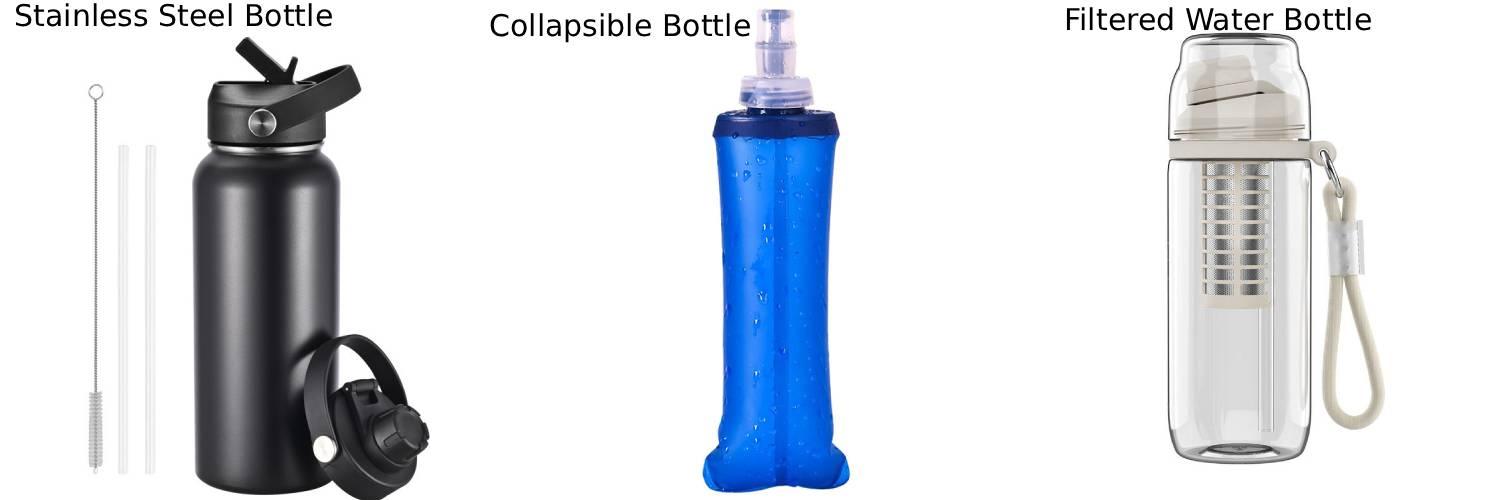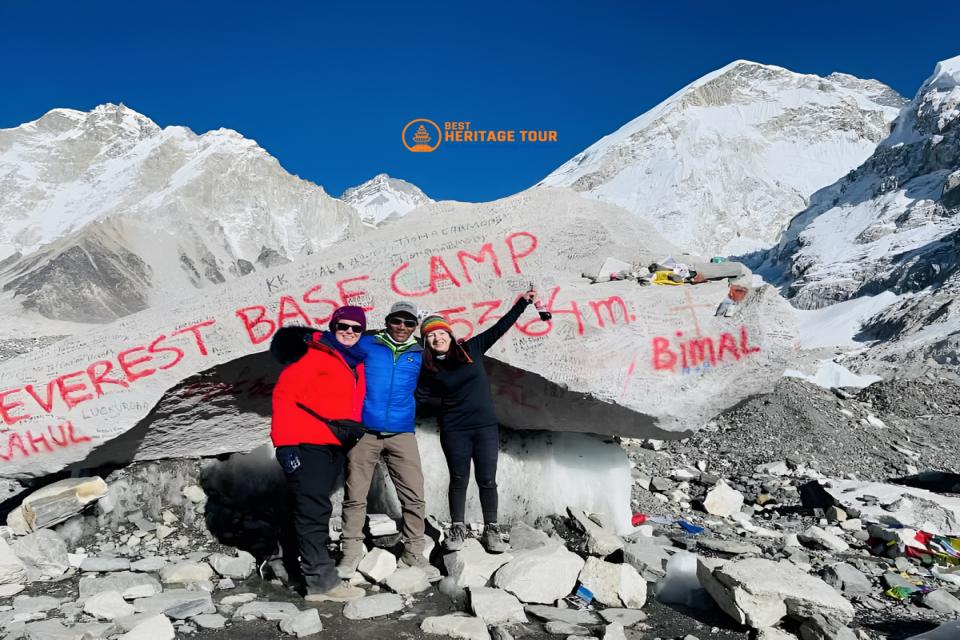Trekking to Everest Base Camp (EBC) is a thrilling adventure through some of the world’s most spectacular mountains. But while you focus on breathtaking peaks, high-altitude villages, and cultural encounters, one small yet crucial item can make or break your trek: your water bottle.
Staying hydrated at high altitudes is not optional - it’s essential. The combination of dry air, physical exertion, and altitude increases your risk of dehydration, which can lead to headaches, fatigue, and even altitude sickness.
So, which water bottle is best for the EBC trek? Should you use plastic, stainless steel, insulated, or collapsible bottles? How much water should you carry, and how do you manage refills? In this blog, we’ll explore everything you need to know about choosing the perfect water bottle for Everest Base Camp trekking.
Why Choosing the Right Water Bottle Matters
a) Hydration at High Altitude
At elevations above 3,000 meters, your body loses more water through respiration and sweat. Many trekkers underestimate water needs, which can worsen Acute Mountain Sickness (AMS).
b) Convenience & Portability
The ideal water bottle should be:
-
Lightweight - Trekking for 12+ days means every gram counts.
-
Durable - Must withstand drops, rough handling, and cold temperatures.
-
Easy to Refill - Access to clean water varies in tea houses and villages.
c) Temperature Control
-
At EBC, daytime temperatures can rise to 12-15°C at lower elevations but drop below -5°C at night.
-
Insulated bottles prevent freezing or keep water cool, depending on season.
d) Environmental Responsibility
-
Avoid single-use plastics. A reusable water bottle reduces waste in fragile Himalayan ecosystems.
Types of Water Bottles Recommended for EBC Trek
a) Stainless Steel Bottles
-
Durable, long-lasting, and environmentally friendly.
-
Insulated double-wall options keep water warm for several hours - essential in cold high-altitude conditions.
-
Weight: 300-500g depending on size.
Pros:
-
Retains temperature
-
BPA-free and eco-friendly
-
Easy to clean
Cons:
-
Slightly heavier than plastic
-
Can dent if dropped
Recommended Brands:
-
Hydro Flask
-
Klean Kanteen
-
Stanley Adventure
b) Collapsible or Soft Bottles
-
Made from lightweight silicone or TPU materials.
-
Foldable when empty, saving space in your backpack.
Pros:
-
Extremely lightweight
-
Flexible storage
-
Easy to pack
Cons:
-
Less durable than stainless steel
-
May not keep water warm
Recommended Brands:
-
Vapur
-
Platypus
c) Filtered Water Bottles
-
Equipped with built-in filters to purify water from streams or taps.
-
Very useful if you prefer trekking independently and refilling from natural sources.
Pros:
-
Reduces need to buy bottled water
-
Convenient in remote areas
Cons:
-
Heavier than regular bottles
-
Requires maintenance and cleaning
Recommended Brands:
-
Grayl Ultralight
-
LifeStraw Go
How Much Water Should one Carry during EBC Trek?
At EBC altitudes:
-
3-4 liters per day is recommended
-
Smaller sips frequently are better than large quantities at once
-
Refill at tea houses, streams (with purification), or portable water stations
Tips for Managing Water on the Trek
-
Use an insulated bottle in cold seasons to prevent freezing.
-
Avoid carrying multiple single-use plastic bottles - eco-friendly alternatives are better.
-
Keep water accessible in a side pocket of your backpack.
-
Add electrolytes for longer days to maintain energy and hydration.
-
Clean daily - residual bacteria can accumulate in warm temperatures at lower altitudes.
Best Practices by Season
Autumn (Oct-Nov)
-
Colder nights: Insulated stainless steel bottles keep water from freezing.
-
Daytime: Can use lightweight bottles for trekking, refill when resting.
Spring (Mar-Apr)
-
Slightly warmer temperatures: Both insulated and collapsible bottles work.
-
Water sources are plentiful due to snowmelt; carry a filter bottle if you prefer natural sources.
Common Mistakes to Avoid
-
Using thin plastic bottles - prone to cracking and not environmentally friendly.
-
Forgetting to carry enough water for long stretches between tea houses.
-
Not cleaning bottles daily, risking bacterial growth.
-
Ignoring cold-proof options - water freezes quickly at altitudes above 4,500 meters.
Why Trek with Best Heritage Tour
Choosing the right water bottle is essential, but so is planning the trek properly. That’s where Best Heritage Tour makes a difference:
-
Expert Advice: Guides recommend the best bottles and hydration strategies.
-
Refill & Support: Knowledgeable guides know where safe water sources are along the EBC route.
-
Complete Packages: Permits, accommodations, meals, and logistics handled for you.
-
High-Altitude Safety: Guides monitor hydration and altitude sickness risks.
When you trek with Best Heritage Tour, you focus on the experience while we handle safety, gear, and logistics.
Conclusion
The best water bottle for Everest Base Camp depends on durability, insulation, portability, and your preferred refilling method:
-
Stainless steel insulated bottles - ideal for cold weather and durability.
-
Collapsible bottles - great for lightweight and space-saving.
-
Filtered bottles - perfect for trekkers relying on natural water sources.
Regardless of choice, staying hydrated is critical for safety, energy, and enjoyment. Equip yourself properly, drink frequently, and enjoy the magnificent journey to Everest Base Camp.
Book Your Everest Base Camp Trek with Best Heritage Tour
Phone: +977-9851149197 / +977-9810043046
Email: info@bestheritagetour.com / bestheritagetour@gmail.com
Website: www.bestheritagetour.com
Office: Thamel Marg, Kathmandu, Nepal
With Best Heritage Tour, your trek is safe, well-organized, and every detail - including hydration advice - is taken care of.
Author: Best Heritage Tour
Date: 24th August, 2025


